If there is one thing that 2020 has taught us, it is that life is unpredictable. Society has been on the brink for a better part of the year, prompting preppers to become even more prepared for what is ahead. If and when SHTF, we all want to be ready for it.
One great way to ensure your family will have enough to eat is by growing your own food. In order to grow a produce garden, you will need quality seeds. Instead of paying your hard-earned money for seeds, you can harvest seeds from store-bought fruits and vegetables, as well as garden-grown produce.
Selecting non-hybrid, heirloom, or open-pollinated produce for seed harvest improves their chances of viability when planted. In addition to harvesting, drying and seasonal storage are also vital when seed harvesting and storing.
Related: The Only 6 Seeds You Need to Stockpile for a Crisis
How To Harvest Your Seeds
Before harvesting, be sure to select your healthiest plants for their seeds. Any disease or abnormalities in the produce will transfer to the seeds and therefore, the new plant.
Also select heirloom or open-pollinated plants, as they keep producing every year. Hybrid plants are more seasonal and will not continue to yield a reliable crop after one season.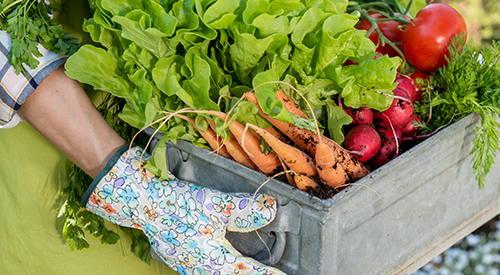
- Pick a fully matured fruit to harvest. Healthy, mature, and productive plants will give off the best seeds and grow into the healthiest plants.
- Slice the produce open with a clean, sharp knife.
- For dry seeds, such as bell peppers, shake the seeds into a bowl. For wet seeds, such as tomatoes, scoop the seeds into a bowl.
- Cover any pulpy or wet seeds with water. Allow them to sit in the water for 2-4 days, stirring daily. This will allow the seeds to sink to the bottom of the bowl, while the pulp floats on top of the water.
- Rinse all seeds with clean water before laying out on a paper towel to dry. Be sure to layer in one single layer so the seeds dry properly.
- Place the seeds in a well-ventilated area to completely dry. Turn the seeds with your hands every day to ensure they are drying evenly on all sides.
- Once the seeds are fully dry, store them in a sealed glass jar, away from light. This environment should be very cool and dry. Seeds will last up to one year if stored this way.
Issues That Can Arise When Seed Harvesting
Disease
Any disease that the plant had previously will pass on to it’s seeds and eventual new plant. Choose very healthy produce to extract all seeds from for the best chance at plant survival.
Related: How To Protect Your Garden From Pests And Diseases
Improper Storage
Storage is everything once the seeds are harvested. Seeds need to be kept in an airtight container, away from light and moisture once dried. Seeds will not be viable if they are not stored properly.
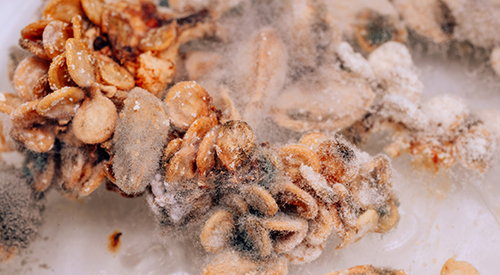
Residual Moisture Content
Seeds need to be fully dry, without any moisture whatsoever in order to be ready for storage. Any residual moisture will invite disease and bacteria into the seeds. Moisture can also cause the seeds to germinate, rendering them useless for planting season.
Best Home Seeds for Harvesting
Tomatoes
You should harvest your tomato seeds because it is one of the most nutritious fruits, and tomatoes grow easily in many environments. One of the most popular produce items in anyone’s kitchen, tomatoes are one of the easiest fruits to harvest seeds from.
Since it is a plant with pulpy seeds, they will need to be harvested with the water method. Choosing tomato plants that are not hybrid will yield the best crop. Heirloom tomatoes are excellent for harvesting and growing each year.
Bell Peppers
One of the fruits with the most dry seeds inside is the bell pepper. Harvesting bell pepper seeds is great because it will yield a large number of seeds, and you will have more than enough peppers for your family, friends, and neighbors.
Simply slicing a pepper in half and shaking it will give off tons of seeds. The seeds then simply need to be dried and stored before planting. Easy!
Cucumbers
Cucumbers are another fruit with pulpy seeds. Harvesting them in a similar fashion to tomato seeds will yield the best results for replanting.
Cucumbers grow in abundance and are great for pickling. Before harvesting, cucumbers need to be yellowing and past ripe in order to harvest viable seeds.
You should harvest cucumber seeds because cucumbers can be used in many different ways once fully grown. They are delicious as a snack, in a salad, or as a pickle. Pickling your cucumbers will allow them to last a long time and develop a delicious, briny flavor. Use some of your cucumber harvest to harvest more seeds, and use the excess fruits to pickle or preserve.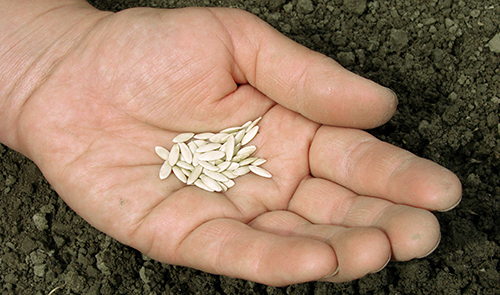
Beans
You will want to harvest beans to add fiber and nutrients to your diet in a dire situation. Harvesting beans is slightly different to the aforementioned methods.
Allow the pods to dry on the plant until they are hard, dry, and brown in color. Remove the pods from the plant and lay them out in a single layer to dry indoors. Leave them for 2 weeks before shelling the beans. You can also wait until planting season to shell the beans and then immediately plant.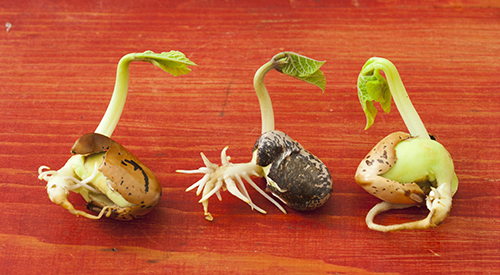
Fresh Herbs
Many herbs are self-seeding, so their seeds will drop in the fall and grow on their own when the season changes to spring. You may want to collect the seeds before they germinate, however, to better control where the crop grows.
Allow the seeds to dry on the plant for as long as possible. Then, remove the whole flower to a paper bag. Harvest the healthiest looking seeds from the flower and dry/store the seeds as discussed. Fresh herb seeds are important to harvest because they will add flavor to your dishes, and can be dried to last a long time.
Both dried and fresh herbs from the garden not only add flavor, but nutritional value as well.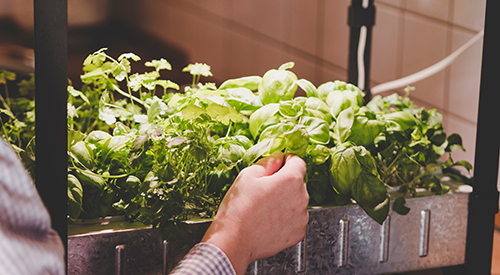
Seed Tips:
- Do your best to rotate where you plant your produce in the garden. Changing up the location of your plants each year will help enrich the soil. For example, do not plant your tomatoes where you always plant your tomatoes. Change up the layout and your soil will gain nutritional benefits.
- Label your seeds. Fall season is seed season, so you may be harvesting many seeds at once. When laying out to dry, label each seed group as to not confuse yourself later on. Also label the jars when storing so there are no surprises come planting season.
Related: How to Properly Harvest Seeds and Get a Sustainable Food Source Year Round
By not harvesting seeds from your produce each year, the cost of purchasing new seeds will rise each season. Harvesting seeds from your own produce will keep your garden afloat if and when SHTF. By using these simple, effective methods, your garden will continue to yield beautiful, delicious crops year after year. Seeds that have been harvested have the ability to last one year in a cool, dry, dark place, allowing you to grow your own food virtually for free.
Having seeds on hand will only benefit your tribe during a crisis situation.
You may also like:
 18 Plants That Should Never Be Planted Together
18 Plants That Should Never Be Planted Together
How to Make A Self-Sufficient Backyard on 1/4 of an Acre (Video)
How To Make Your Immune System Stronger

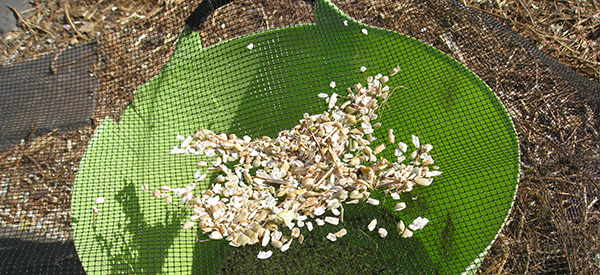
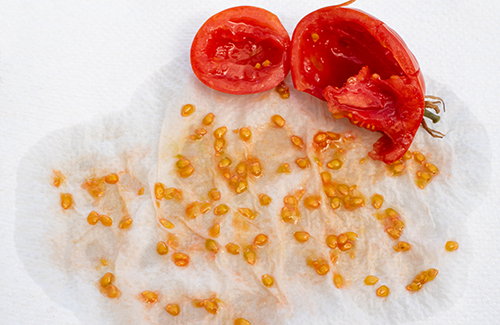
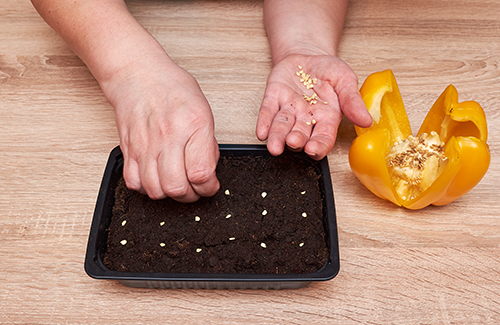













can you extend the storage time by freezing the seeds
Have you ever tried to pick to tomato seeds off of a super towel? I recommend drying the on a piece of window screen.
That should be “paper towel” darn spell check!
Farmer: Dampen the paper towel makes it super easy to take the seeds. niio
I use a grease screen purchased at the dollar store. Turn it upside down with the knob on the bottom and place in a shallow bowl or plate. Spread an even layer and allow to dry for several days in a cool dry place.
or maybe try parchment paper used for baking to dry seeds on, it’s pretty non-stick
Polk and okra will survive where others wont.
Here in North Mississippi, Asian or asparagus beans will take over the garden. It’s now October and mine are still producing.
Farmer: It’s great how cowpeas pump nitrogen into the soil even when producing food. Most legumes don’t. niio
Well, I’ve had more than a bit of Tequila tonight. Have read several articles on here about saving seeds, anybody can save stuff like corn but info on saving small wet seeds like tomato and cucumber are great info. Good teaching articles, I’m only alive if I’m still learning.
I have spent a long life making my living in agriculture/horticulture for the most part, so I’m mostly talking hands on as opposed to book larnin’.
I always read, buy heirloom seeds instead of GMO, because GMO won’t grow.
Heirloom seeds are hybrids that were produced or occurred naturally decades and centuries ago, and have proven to be remarkably stable, reproducing the same offspring at a sustainable rate. Sometimes the line peters out, I think it was ClergyLady or Guvmntgirl who was devastated because a seed line they had inherited from their grandmother had begun to fail. But, because of their stability and superior taste, Heirlooms are always the best way to go.
The simplest expression of hybridization is that if you take plant A and cross it with related plant B, the seeds will produce a plant AB. But if you take seeds from plant AB they will give you a mix of plants, one A, one B, and two AB, that’s just how genetics work. Farmers used to save seeds from their crops to plant the next year’s crop. A hundred years ago seed companies began developing hybrids that were superior enough in performance that buying the latest hybrid was the way to go, profit wise. Farmers being stubborn, they resisted and saved their hybrid seed to use for a few seasons. Grain sorghum was about the last crop grown this way in my region, you could tell the pure hybrid seed because the plants were exactly the same throughout the field, the recycled seed had a large number of plants of different height and yield, which affects harvest negatively but is worth it for the money saved not buying hybrid seed. Seed companies, early in the game, realized this problem and had their geneticists develop what is called the Zombie Gene, creating a hybrid (this is decades before GMO tech) that would not reproduce at all. Since this would be a crime against humanity the seed companies instead made, and continue to make, growers sign a contract when buying their seed that they will not use yield from it to make a new crop.
Complicating the picture is that hybrids now are way beyond A+B=AB, we have hybrids of hybrids of hybrids so you have no idea what you are going to get when you harvest hybrid seed. Heirloom seeds are your best bet for sustainability, not to mention flavor.
I worked on a tree farm 50 some odd years ago, there was an open area where all the workers had had lunch over tens of years. Back in olden times your wife made you a sandwich for lunch, it was wrapped in wax paper which you folded up and saved, whatever you didn’t eat you just threw out on the ground. So there was a fifty foot wide ‘garden’ in front of the picnic tables we ate at of cherry tomatoes, chili pequin, and really tasty melons, okra, and cantaloupe all grown from the seeds from discarded lunch. I love thinking about that spot.
So it is claimed that GMO seed won’t grow, in real life GMO seeds are no different than any other hybrid seed, they reproduce just fine, you will eventually lose the GMO gene and, since the plant was a complex modern hybrid, you will probably have decreasing productivity over time. But GMO ain’t no boogeyman, just a continuation of hi-tech separating us from nature.
Mike: Thanks for the picture of hybrid and GMO for the brown thumb farmers among us. I can kill prickly pear if I try to grow it. Left alone, it does fine. It is only when I try to cultivate it that it give up the ghost.
My parents used to call those accidental plants “volunteers.” They just have the will to live unlike a lot of seeds that won’t do diddly no matter how much you coax them.
GG: We had neighbors that had tomatoes every summer and the last tie they were planted was 1866, when the great-grandfather came home from the civil war and built the house. He brought a wife from North Carolina who brought a lot of seeds. niio
Red, did you ever taste them? My parents had a small tomato cannery in Ohio when I was growing up. Ate a lot of fresh tomatoes and they were much better than anything I can get now. That was over 50 years ago. Yikes! Can’t imagine what a tomato from 150 year old stock would taste like or would it have changed over time?
Gov: Yeah, acid and very good. 2-1/2 to 3 inches across, nice color. Have you tried grape tomatoes? Those are barely domesticated tomatoes. Ya, we used to plant for a cannery. Good money but a pain in the back. I’d rather pick oranges. niio
Thanks for the info, Red. There are two brands of grape tomatoes at my local Walmart. One is as tasteless as hothouse tomatoes. The other is just awesome. Heading there tomorrow and have added them to this list.
Mike: what better way to control food than with hybrids and GMO? hasta
Nothing to harvest. thanks to the bighorn fires (Catalina Mtns) we ere invaded by hordes of garden reeves like birds and javelina pigs. The only really good thing was when the mountain lion showed up. Every coyote in the area ran away. Then the bobcat was seen and mountain lion was seen no more. It’s almost fall, and we’re getting ready for winter crops. Beds are being caged to keep out birds, and black Schifferstadt radishes (Baker’s rare seeds) are going in any bed outside the back (fenced) yard. one tast of one of those radishes and the pigs run off shrieking-AKA German horseradish 🙂 Viva la garden! niio
So did you manage to catch and eat any of those javelina?
GG: Nope. they’re a major sports species. And, their nick-name is skunk pig.
I had a little adventure yesterday. I was soaking down the goji and apple cactus and when done, I took a short cut thru a garden bed. This soil was so hard I wore out a pick digging it up, but backfilled with brush and so on. One leg sank to the knee in the bed. Good thing I did because the hole was next to the lemon, and the soil was dry over than a foot down. 🙂 niio
Red, now that’s DRY. Hard to imagine. Everyone here has a sump pump in their basement for when the water table gets too high during the rainy season, November to sometime in April. Guess we’ve got to take the good with the bad. Sounds as if you have adapted well, though.
I think IvyMikes got it right, seeds are seeds that have inherited the genetics from the plants that came before them, and every plant on earth is a mutated adaptation, i.e. “hybrid”, of the plants that came before, plants that survived and prospered because they had the genetic qualities to thrive in the environment they were in at that time.
Which brings up “climate change”. The real truth about climate is that it has been changing for millennia, long before homo-sapiens even existed. and now the deceiving politicians are claiming “climate change” is a manmade occurrence and they can somehow miraculously take control of Mother Nature and “control climate change”. Really??? Such as stopping hurricanes? Stopping volcanoes? Controlling ocean currents and tidal activity? Controlling solar activity. which is the main factor determining climate and the cyclic changes involved? When some Libtard claims anything about “climate change”, just ask them how many ice ages has the earth experienced? I’ve been taught there have been three major and at least thirteen minor ice ages, as in “global cooling”, followed by “global warming”, but guess what? the earth cooled down and then warmed up again, every time!!! Wow!!! and all without homo-sapiens being involved in any way.
Back to seeds, no matter the source of the seeds, grow what you like and try to learn how to get them to grow better for your particular conditions, then save seeds from the pants you grew and plant them the next year. Plant, harvest, repeat. That is how farmers operated for centuries, and it really works.
https://selfsufficientprojects.com/vegetables-you-can-re-grow-from-scraps/?utm_source=SSP&utm_medium=newsletter
dz: some work, some don’t When cutting an onion, if it shows leaves inside, we soak it over night. it should start to grow roots. then it’s planted in peat for green onions. Most root crops regrow well, but will only set seed. If you like radish seed [pods, that’s cool. We eat a ton of them in season. niio
red, you got that right. I have been able to get stalk and vine cuttings like oregano and sweet potatoes to root, grow, and produce, and have tried to get bak choi, onions, cabbage, and such to root from the leftover root ring at the bottom, but even if they started rooting, they would also start rotting and the rot would overtake the growth even if planted in soil and we monitored the watering. For gardening I’ll try everything, observe, try to adapt, and use what works.
I received a “How to Get Rid of Aphids for GOOD” email. I have tried several of these methods and the aphids always came back, here’s the link if you want to take a look:
https://thegardeningdad.com/?s=aphids
dz: those that survived are all going to seed. Looks like a good harvest of black seeds for brown mustard.
It’s an over-fertilizing problem. That, and it’s still too cold for lizards to come out for long. niio
red, I do not have any Red Onion seeds so tried your advice to use the “sprout” from the center of the onion. My first attempt started growing more of the green tip, but didn’t root and started to rot at the root end, so I scraped off the softer material and planted it in a pot with about an inch of the green part above the soil to see if it will survive, and a week later the green growing tip is still green and solid, which is a good sign. My wife wanted to use another Red Onion so I paid a lot more attention to getting to the center “sprout” without damaging it by cutting vertically about 1/2 inch off-center, and discovered it had two sprouts, so carefully removed them and separated the two sprouts, resulting in about a 1/2 inch square of the root area on the bottoms, put them in about 1/4 inch of water, and in two days they have both started rooting and the green tips are growing, even dividing into several green tips. So do I try to separate the additional green growing sprouts into even more starts, or is it better to plant them with three, four, or five green sprout tips per section?
Dz: My experience: Your best bet is buy red onion sets to plant. When starting most onion seed, we do it in late fall, in a garden bed. Mind birds! But, by preference, we like multiplier onions, not bulbs. Cut then when they get big enough to use, then allow them 4-to-6 weeks to recover.
When the bulb allows, like now when it’s very young, yes split it.
For us, here, bulb onions are too fragile. Scallions divide and continue to grow till the heat is bad, then go dormant. From bulbs, too many don’t come back in late summer. Best multiplier here is I’itoi onion from Native Seed Search. In good soil, you can expect up to 50 divisions per stalk. And now you have me wishing I had bought some red multipliers 🙂 peace.